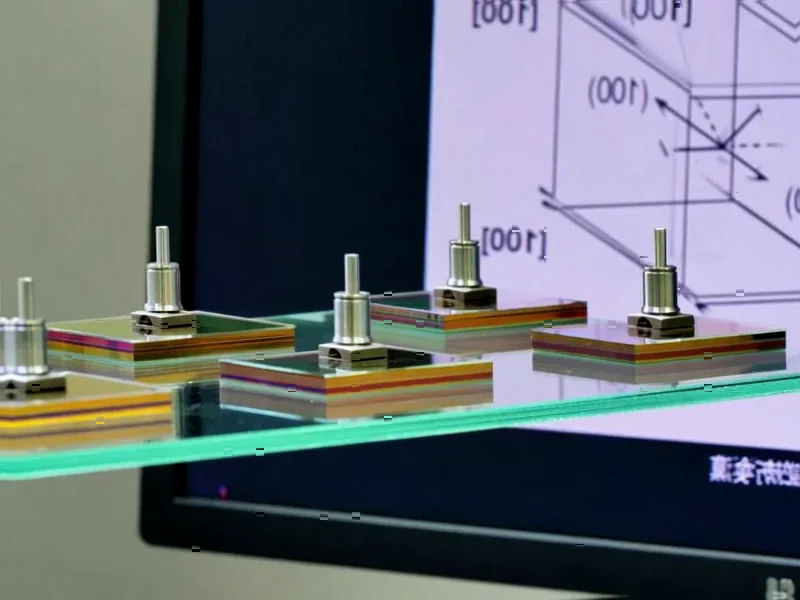According to Manufacturing.net, researchers at ETH Zurich led by Parth Chansoria have developed a groundbreaking system called G-FLight (Gravity-independent Filamented Light) that enables 3D printing of viable muscle tissue in microgravity conditions. The team conducted experiments during 30 parabolic flight cycles, successfully producing muscle constructs within seconds using a specialized bio-resin formulation. The tissue printed in zero gravity showed comparable cell viability and muscle fiber count to Earth-printed tissue while eliminating structural collapse issues caused by gravity. This advancement represents a critical step toward manufacturing complex human organoids and tissues aboard the International Space Station for studying diseases like muscular dystrophy and muscle atrophy. The technology’s ability to precisely align muscle fibers could transform pharmaceutical testing and disease research.
The $4 Billion Space Biotech Opportunity
The successful demonstration of microgravity tissue manufacturing opens immediate commercial pathways in pharmaceutical research and development. Pharmaceutical companies currently spend approximately $100 billion annually on drug development, with tissue testing representing a significant portion of preclinical costs. The ability to create more accurate human tissue models in space could capture a substantial segment of this market by providing superior testing platforms that better predict drug efficacy and toxicity. This positions space-based biomanufacturing as a potential multi-billion dollar industry within the next decade, with early adopters gaining significant competitive advantages in drug development pipelines.
First-Mover Advantage in Orbital Infrastructure
ETH Zurich’s breakthrough creates strategic positioning opportunities for companies building orbital manufacturing capabilities. The timing coincides with the expansion of commercial research facilities aboard the International Space Station and the development of private space stations by companies like Axiom Space and Sierra Space. Organizations that secure early intellectual property in space-based tissue manufacturing could establish de facto standards for an emerging industry, similar to how early semiconductor patents dominated computing. The ability to store cell-loaded bio-resins for extended periods, as demonstrated in the research, provides crucial logistical advantages for commercial operations where launch schedules and orbital access remain constrained.
Multiple Revenue Streams Beyond Research
The business model extends far beyond academic research into three primary revenue streams: pharmaceutical testing services, specialized tissue production for medical applications, and technology licensing. The most immediate opportunity lies in contracting with pharmaceutical companies to provide superior tissue models for drug testing, potentially commanding premium pricing for models that reduce late-stage clinical trial failures. Additionally, the technology could evolve toward producing implantable tissues for medical treatments, creating a direct product revenue stream. The G-FLight system itself represents a licensable technology platform that could be adapted for various biomedical applications in microgravity environments.
Redefining the Biomedical Testing Industry
This development threatens to disrupt traditional biomedical testing approaches that rely on animal models or less accurate Earth-grown tissues. The precision alignment of muscle fibers achieved in microgravity addresses fundamental limitations in current in vitro testing methodologies, potentially rendering them obsolete for certain applications. Companies invested in conventional tissue engineering face strategic decisions about whether to develop their own space-based capabilities, partner with orbital service providers, or risk being displaced by more accurate testing platforms. The emergence of space-based biomanufacturing could create a new tier in the biomedical industry where orbital access becomes a competitive differentiator.
Where the Smart Money is Looking
This breakthrough signals investment opportunities across multiple sectors: space infrastructure providers, biotechnology specialists, and pharmaceutical companies seeking competitive advantages. The research demonstrates that the technical barriers to space-based tissue manufacturing are surmountable with current technology, reducing perceived risk for investors. We’re likely to see increased venture capital flowing into companies that can bridge the gap between laboratory demonstrations and commercial operations. The successful integration of biological manufacturing with space infrastructure represents a convergence trend that could define the next decade of biotechnology innovation, creating entirely new markets at the intersection of these previously separate industries.




